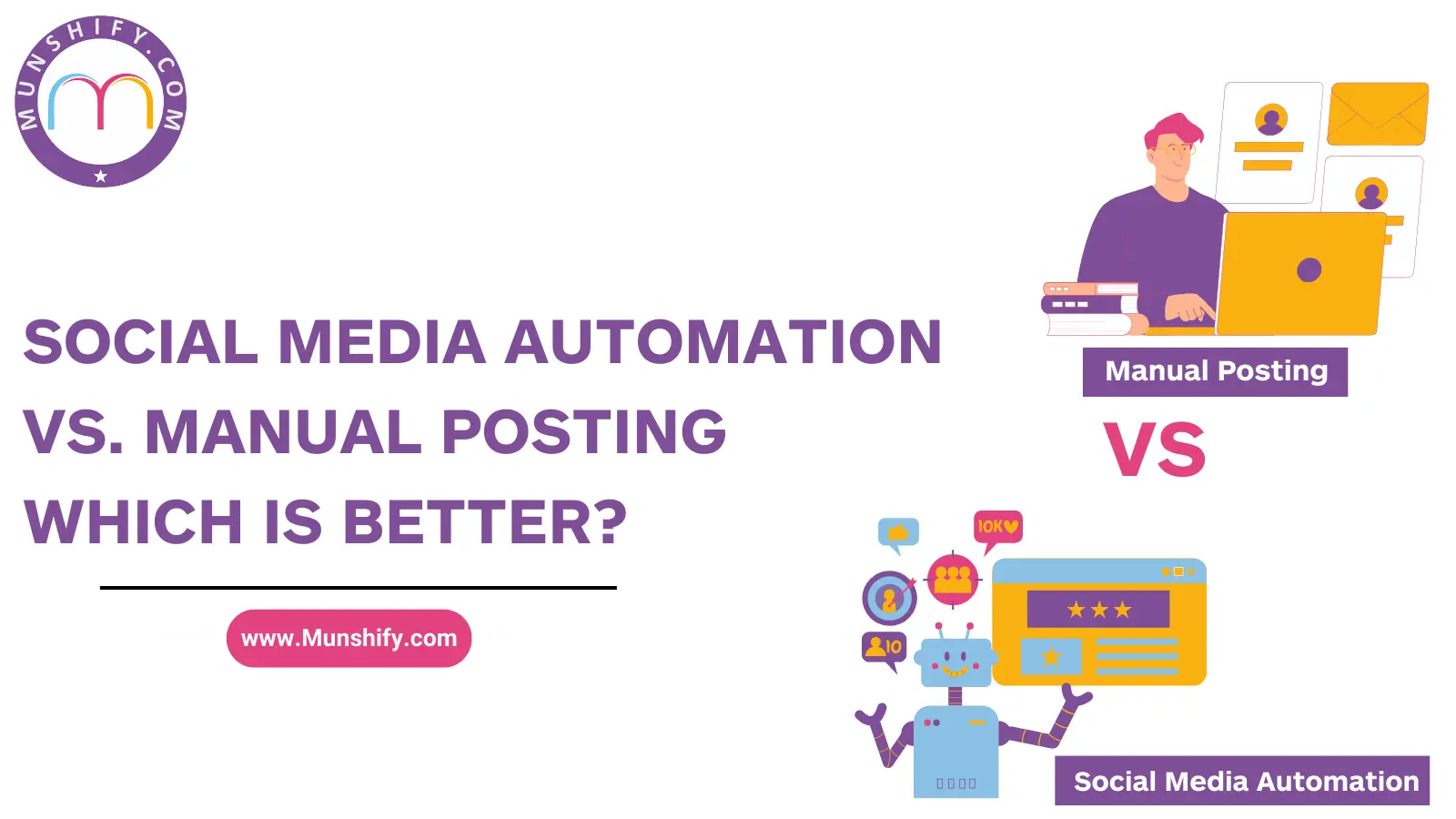In today’s digital age, social media has become an indispensable tool for businesses and individuals. From promoting products to building personal brands, the reach and influence of social media platforms are unparalleled. With the vast opportunities it offers, the debate between Social Media Automation and manual posting has become increasingly relevant. As businesses and influencers strive to maintain a strong online presence, they must choose the most efficient and effective method for managing their social media accounts. In this blog, we will delve into the world of social media automation, its benefits, a comparison with manual posting, and best practices for its implementation.
Tabel of content
- Understanding Social Media Automation
- The Benefits of Social Media Automation
- Comparing Manual Posting to Automation
- Best Practices for Social Media Automation
Understanding Social Media Automation
Social media automation involves using software tools to manage and schedule posts across various social media platforms. These tools allow users to plan, create, and publish content automatically at predetermined times. Social media automation aims to streamline the process of maintaining an active online presence, enabling users to focus on content creation and engagement without being bogged down by the manual posting process.
Automation tools come with various features, including scheduling posts, analyzing performance metrics, and responding to comments and messages. Some popular social media automation tools include Hootsuite, Buffer, and Sprout Social. By leveraging these tools, businesses and individuals can optimize their social media strategies and ensure consistent posting, which is crucial for maintaining audience engagement.
Know more about Social Media Automation in this blog.
The Benefits of Social Media Automation
- Time Efficiency: Social media automation saves considerable time by allowing users to schedule posts in advance. This means that users can dedicate specific time to content creation and planning rather than being tied to their devices to post in real time.
- Consistency: Consistency is key in social media marketing. Automation ensures that posts go live at optimal times, maintaining a steady flow of content and keeping the audience engaged.
- Advanced Analytics: Many automation tools provide in-depth analytics and insights, helping users track the performance of their posts. This data can be crucial for refining social media strategies and improving engagement rates.
- Global Reach: Automation allows users to post content that aligns with different time zones at times, expanding their reach to a worldwide audience. This is especially beneficial for businesses with international customers.
- Improved Engagement: By automating routine tasks, users can focus more on interacting with their audience. This increased engagement can lead to stronger relationships with followers and higher conversion rates.
- Error Reduction: Scheduled posts can be reviewed and edited before they go live, reducing the chances of mistakes and ensuring that content aligns with the brand’s voice and message.
- Cost-Effective: For businesses, social media automation can reduce the need for a large social media team. Automation tools can handle many tasks that would otherwise require a significant workforce.
Comparing Manual Posting to Automation
- Control and Flexibility: Manual posting offers greater control and flexibility. Users can respond to real-time events and trends, creating more timely and relevant content. Automation, while efficient, can sometimes lack this spontaneity.
- Personal Touch: Manual posting allows for a more personalized approach. Furthermore, it’s easier to convey emotions and respond to followers more authentically. Automated responses can sometimes come off as impersonal.
- Adaptability: Manual posting is more adaptable to sudden changes or crises. While automation tools can schedule posts, they can’t always account for unforeseen events that may require immediate attention.
- Time Investment: Manual posting requires a significant time investment. Moreover, users must be constantly available to post content, which can be particularly challenging for small businesses or individual influencers.
- Consistency: As mentioned earlier, automation ensures consistent posting schedules. Manual posting, however, can sometimes lead to irregular posting habits if the user is calm and available.
- Analytics and Insights: Automation tools provide detailed analytics that can inform future content strategies. In contrast, manual posting often relies on basic metrics available on the social media platform, which may be less comprehensive and robust.
Best Practices for Social Media Automation
- Plan Your Content Calendar: Create a content calendar in order to plan and schedule posts in advance. This approach ensures a consistent posting schedule and enables strategic planning of content themes and campaigns.
- Use Analytics to Guide Strategy: Regularly review the analytics provided by your automation tools. This data can help refine your content strategy by focusing on what resonates most with your audience.
- Balance Automation with Personal Interaction: While automation can handle posting and basic interactions, make sure to allocate time for personal engagement with your followers. Responding to comments and messages personally can enhance your relationship with your audience.
- Regularly Update and Review Scheduled Posts: Ensure that your scheduled posts remain relevant and timely. Additionally, periodically review and update your content calendar to account for any changes or new trends.
- Integrate Different Types of Content: Use a mix of content types, including images, videos, and text posts. Moreover, automation tools can schedule a variety of content formats, keeping your feed diverse and engaging.
- Monitor Automated Responses: If your automation tool includes features for responding to comments or messages, it is essential to monitor these interactions to ensure they align with your brand’s tone and message.
- Stay Up to Date with Platform Changes: Social media platforms frequently update their algorithms and features. Therefore, stay informed about these changes to ensure your automated strategies remain effective.
In conclusion, Munshify TenaX Social Media Automation offers numerous benefits, including time efficiency, consistency, and advanced analytics. It allows businesses and individuals to maintain a robust online presence while focusing on content creation and audience engagement. However, it’s important to strike a balance between automation and personal interaction. Manual posting provides greater flexibility and a personal touch, which can be crucial for building authentic relationships with followers.
Ultimately, the choice between social media automation and manual posting depends on individual needs and goals. However, by understanding the strengths and limitations of each approach and implementing best practices, users can optimize their social media strategies to achieve their desired outcomes. Social media automation, when used effectively, can be a powerful tool in the arsenal of any digital marketer or social media enthusiast.
Know more about Social Media Management.


